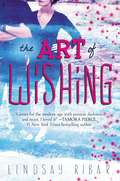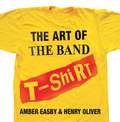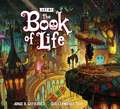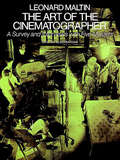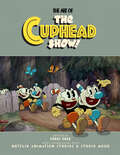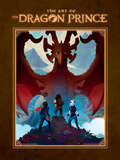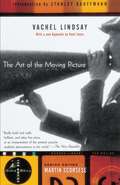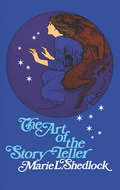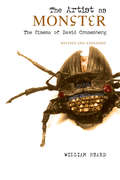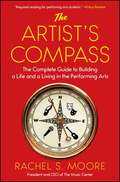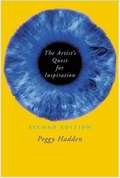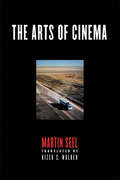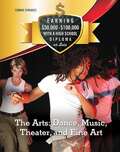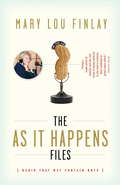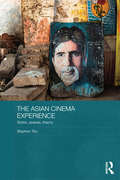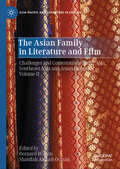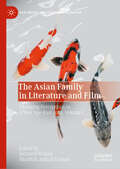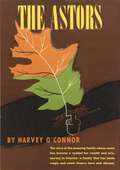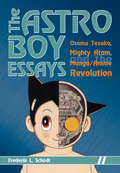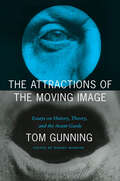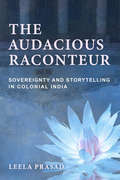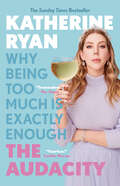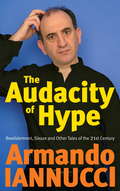- Table View
- List View
The Art of Wishing
by Lindsay Ribar"[With] a genie like no other. . . this lighthearted book is a well-rounded combination of humor, romance and paranormal suspense, with likable characters and easy-to-believe dialogue. " (Kirkus Reviews) Margo McKenna has a plan of attack for everything, from landing the lead in her high school musical to dealing with her increasingly absent parents. But when she finds herself in possession of a genie's ring and the opportunity to make three wishes, she doesn't know what to do. Especially since Oliver--not blue-skinned, not bottle-dwelling, but a genie nonetheless--can see more than what she's willing to show him. With one peek into her mind, he can see the wishes that even Margo herself doesn't know she wants. But Oliver comes with more than just mind-reading abilities, a flair for magic, and the prettiest eyes Margo's ever seen. Someone from his past is hunting him--someone bent on killing him, along with all the other genies in the world, for the sake of honor. And as Margo soon discovers, it will take more than three wishes to save him. A whole lot more. .
The Art of Zootropolis
by John Lasseter Jessica Julius Byron Howard Rich MooreDisney's newest animated feature, Zootropolis, is a comedy-adventure starring Officer Judy Hopps, a rookie bunny cop who has to team up with fast-talking scam-artist fox Nick Wilde to crack her first case in the all-animal city of Zootropolis. This lushly illustrated book offers a behind-the-scenes view of the elaborate artistry involved in creating the film.
The Art of the Band T-Shirt
by Amber Easby Henry OliverOnce, T-shirts were just unadorned undergarments. But with the evolution of screen printing and the birth of band merchandising, T-shirts became so much cooler. Now every band with an ounce of savvy knows the importance of T-shirts not only as a lucrative sideline but also as a means of self-promotion and a way for fans to show their allegiance. The Art of the Band T-shirt is a visual history of that perennial fashion statement, complete with nearly two hundred images of the most important, influential, iconic, and ironic T-shirts. It includes shirt images from artists as diverse as Led Zeppelin, the Ramones, Madonna, Morrissey, Public Enemy, and the Flaming Lips, each with a caption that includes historical background, little-known facts, or an artist's comments about the design. A fascinating, beautifully illustrated archive for hipsters, fashionistas, serious collectors, and all music fans, The Art of the Band T-shirt is as indispensable and classically cool as the perfect T-shirt.
The Art of the Book of Life
by Jorge GutierrezA tale packed with adventure, The Book of Life celebrates the power of friendship and family, and the courage to follow your dreams.To determine whether the heart of humankind is pure and good, two godlike beings engage in an otherworldly wager during Mexico's annual Day of the Dead celebration. They tether two friends, Manolo and Joaquin, into vying for the heart of the beautiful and fiercely independent Maria, with comical and sometimes dangerous consequences. This volume is an inspirational behind-the-scenes look at the making of the animated feature film The Book of Life, from visionary producer Guillermo del Toro (Pan's Labyrinth) and director Jorge R. Gutierrez (El Tigre: The Adventures of Manny Rivera).
The Art of the Cinematographer
by Leonard MaltinSurvey and anecdotal interviews with 5 masters -- Arthur Miller, Hal Mohr, Hal Rosson, Lucien Ballard, and Conrad Hall. 105 photographs. Filmographies.
The Art of the Cuphead Show
by Deeki DekeHoly smokes! It&’s the art of The Cuphead Show!If you&’re one of the many people who have fallen in love with the Cuphead video games and Netflix animated series, this book is for you! Join writers, artists, designers, and other staff from The Cuphead Show as they take you on a deep dive of the development and production of one of the hottest animated series around!Covering all three seasons of the animated series, this book features never-before-seen production art, animatics, character designs, and more! It&’s a stellar collection that true fans won&’t want to miss.
The Art of the Dragon Prince
by WonderstormAaron Ehasz won a Peabody Award for his work as head writer and co-executive producer of Avatar: the Last Airbender, and was part of the Emmy-award winning writing team of Futurama. Most recently, he was creative director at Riot Games where he worked on League of Legends as well as projects in development. He earned his MBA at Stanford, and undergrad degree from Harvard.Justin Richmond was a Research and Development Producer leading the team creating one of Riot Games' next big projects. Before that, Justin was the Game Director on the Uncharted franchise at Naughty Dog. Uncharted is one of Sony's most iconic and beloved game franchises with over 25 million units sold as well as 13 DICE Awards and 4 BAFTA's. His Game Direction work on Uncharted 3 earned him a nomination for the DICE Award for Outstanding Achievement in Game Direction. Justin has a B.S. in Film from Boston University and a degree in 3D Animation from Vancouver Film School.
The Art of the Moving Picture (Modern Library Movies)
by Vachel Lindsay Stanley Kauffmann Kent Jones"In the field of film aesthetics, it is the first important American work, still important--The Art of the Moving Picture is astonishing."--Stanley Kauffmann. Written in 1915, The Art of the Moving Picture by poet Vachel Lindsay is the first book to treat movies as art. Lindsay writes a brilliant analysis of the early silent films (including several now lost films). He is extraordinarily prescient about the future of moviemaking--particularly about the business, the prominence of technology, and the emergence of the director as the author of the film. From the Trade Paperback edition.
The Art of the Story-Teller
by Marie L. Shedlock"It is a delight to see a new edition of this long out-of-print book, the best on the subject of stpry-telling." -- The Junior Bookshelf. Everything you need to know to tell stories successfully to children: choosing material, using gestures, capturing straying attentions, more. 18 ready-for-telling stories written especially for youngsters. Annotated bibliography of 135 stories.
The Artist as Monster: The Cinema of David Cronenberg
by William BeardPAPERBACK INCLUDES TWO NEW CHAPTERSDavid Cronenberg is one of the most fascinating filmmakers in the world today. His provocative work has stimulated debate and received major retrospectives in museums, galleries, and cinematheques around the world. William Beard's The Artist as Monster was the first book-length scholarly work in English on Cronenberg's films, analyzing all of his features from Stereo (1969) to Crash (1996). In this paperback edition, Beard includes new chapters on eXistenZ (1999) and Spider (2002).Through close readings and visual analyses, Beard argues that the structure of Cronenberg's cinema is based on a dichotomy between, on the one hand, order, reason, repression, and control, and on the other, liberation, sexuality, disease, and the disintegration of self and of the boundaries that define society. The instigating figure in the films is a scientist character who, as Cronenberg evolves as a filmmaker, gradually metamorphoses into an artist, with the ground of liberation and catastrophe shifting from experimental subject to the self.Bringing a wealth of analytical observation and insight into Cronenberg's films, Beard's sweeping, comprehensive work has established the benchmark for the study of one of Canada's best-known filmmakers.
The Artist's Compass: The Complete Guide to Building a Life and a Living in the Performing Arts
by Rachel MooreAn inspiring, real world guide for artists in the classic bestselling tradition of What Color Is Your Parachute? that shows how to build a successful, stable career in the performing arts, from the President and CEO of the Los Angeles Music Center who has carved her own success through her creative talent and business skill.While performing artists have many educational opportunities to perfect their craft, they are often on their own when it comes to learning the business skills necessary to launch their careers. At the end of the day, show business is, well, a business. In The Artist's Compass, Los Angeles Music Center CEO Rachel Moore shares how to make life as a performer more successful, secure, and sustainable by approaching a career in the arts like an entrepreneur. A former dancer in the American Ballet Theatre's corps de ballet, Moore knows firsthand what it's like to struggle and succeed as an artist. Now in an offstage role as CEO, Moore shares the hard-won lessons she's learned about making one's own success and encourages every performer to develop creative talent alongside marketable skills. With testimonials from artists like Lang Lang, Sigourney Weaver, and Renee Fleming, plus inspiring anecdotes from Moore's own journey in the arts, The Artist's Compass teaches aspiring performers how to think like an entrepreneur to create their own brand and marketing platform to achieve personal and professional success. In an engaging, realistic, and authoritative voice, Moore combines her artistic and corporate experience to address the finer points of building a career in a challenging industry, teaching young performers how to achieve financial independence so that they might have creative independence.
The Artist's Quest of Inspiration
by Peggy HaddenUpdated to inspire a new generation of visual artists in their quest for creative growth, this book shows artists how they can experience a new awakening of creativity and add fresh meaning to their work by using simple techniques found in this inspirational guide. A working artist who has coped successfully with the daily challenge of facing a blank canvas shares her methods for overcoming creative blocks.Allworth Press, an imprint of Skyhorse Publishing, publishes a broad range of books on the visual and performing arts, with emphasis on the business of art. Our titles cover subjects such as graphic design, theater, branding, fine art, photography, interior design, writing, acting, film, how to start careers, business and legal forms, business practices, and more. While we don't aspire to publish a New York Times bestseller or a national bestseller, we are deeply committed to quality books that help creative professionals succeed and thrive. We often publish in areas overlooked by other publishers and welcome the author whose expertise can help our audience of readers.
The Arts of Cinema
by Martin SeelIn The Arts of Cinema, Martin Seel explores film’s connections to the other arts and the qualities that distinguish it from them. In nine concise and elegantly written chapters, he explores the cinema’s singular aesthetic potential and uses specific examples from a diverse range of films—from Antonioni and Hitchcock to The Searchers and The Bourne Supremacy—to demonstrate the many ways this potential can be realized. Seel’s analysis provides both a new perspective on film as a comprehensive aesthetic experience and a nuanced understanding of what the medium does to us once we are in the cinema.
The Arts: Dance, Music, ater, and Fine Art (Earning $50,000 - $100,000 with a High S)
by Connor SyrewiczFor many high school graduates, college is a way to get ahead, but going to college is not the only way for young adults to succeed. Many people choose to enter the workforce after high school to start earning money and gaining experience right away. These motivated young workers can have rewarding jobs without ever having to earn a 4-year college degree. If you're interested in music, theater, or art, and don't know that you want to--or can--go to college, a career in the arts might be right for you. Young people need only a high school diploma or equivalent to start work in a career in the arts, and they can eventually earn more than $50,000 a year. In The Arts: Dance, Music, Theater and Fine Art, you'll learn how to start a career in the arts and what you need to succeed in the field. Find out about the prospects for these careers in the future, how much workers can make each year, and whether your path to success includes a career in music, theater, dance, or fine art.
The As It Happens Files
by Mary Lou FinlayIn the tradition of Peter Gzowski's The Morningside Papers comes a book that celebrates the great stories and personalities behind As It Happens.For eight years, Mary Lou Finlay had the pleasure of being the co-host of one of CBC Radio's most enduring institutions. On any given day she and Barbara Budd interviewed people on subjects varying from the Air India investigation to a man who invented a suit that would withstand an attack from a grizzly bear to a cheese-rolling contest in Cheshire. The As It Happens Files gives us the great stories - the hilarious eccentrics, the audience favourites, the poignant moments - that make up, for many Canadians some of the fondest, most vivid memories of the last decade.
The Asian Cinema Experience: Styles, Spaces, Theory (Media, Culture and Social Change in Asia)
by Stephen TeoThis book explores the range and dynamism of contemporary Asian cinemas, covering East Asia (China, Japan, South Korea, Hong Kong, Taiwan), Southeast Asia (Thailand, Singapore, Malaysia), South Asia (Bollywood), and West Asia (Iran), in order to discover what is common about them and to engender a theory or concept of "Asian Cinema". It goes beyond existing work which provides a field survey of Asian cinema, probing more deeply into the field of Asian Cinema, arguing that Asian Cinema constitutes a separate pedagogical subject, and putting forward an alternative cinematic paradigm. The book covers "styles", including the works of classical Asian Cinema masters, and specific genres such as horror films, and Bollywood and Anime, two very popular modes of Asian Cinema; "spaces", including artistic use of space and perspective in Chinese cinema, geographic and personal space in Iranian cinema, the private "erotic space" of films from South Korea and Thailand, and the persistence of the family unit in the urban spaces of Asian big cities in many Asian films; and "concepts" such as Pan-Asianism, Orientalism, Nationalism and Third Cinema. The rise of Asian nations on the world stage has been coupled with a growing interest, both inside and outside Asia, of Asian culture, of which film is increasingly an indispensable component – this book provides a rich, insightful overview of what exactly constitutes Asian Cinema.
The Asian Family in Literature and Film: Challenges and Contestations-South Asia, Southeast Asia and Asian Diaspora, Volume II (Asia-Pacific and Literature in English)
by Bernard Wilson Sharifah Aishah OsmanThis book investigates the ways in which the family unit is now perceived in South and Southeast Asia and the Asian diaspora: its numerous conceptions and the changes it has undergone over the last century and into the new one. The prevailing threads that run through a significant part of the literature and cinema emerging from these societies are the challenges that confront those negotiating changing forms of family, changes which are expressed historically, politically, and socio-culturally, and often in relation to gender, ethnic, or economic imbalances. Though regional and localized in many ways, they are also very much universal in the questions they ask, the lessons they teach, and the connections they make. Theoretically, and in terms of focus, the collection offers a broad range, embracing representation and analysis from scholars across the globe and across disciplines. It assembles written and visual texts from and about India, Indonesia, Malaysia, The Philippines, Singapore, and the Asian diaspora. How have more fluid concepts of family in the late twentieth and early twenty-first centuries affected the understanding of family in Asia? How have families in Asia resisted or embraced change? How have they responded to trauma? What do other readings—gendered, feminist, queer, and diasporic—bring to modern debates surrounding family? To what extent are notions of family, community, society, and nation represented as interchangeable concepts in Asian societies? This book questions the power dynamics, ethical considerations, and moral imperatives that underpin families and societies within, and beyond, Asian borders.
The Asian Family in Literature and Film: Changing Perceptions in a New Age-East Asia, Volume I (Asia-Pacific and Literature in English)
by Bernard Wilson Sharifah Aishah OsmanThis book offers a key analysis of the changing perceptions of family in East Asian societies and the dynamic metamorphosis of “traditional” family units through the twentieth century and into the new millennium. The book focuses on investigations of the Asian family as it is represented in literature, film, and other visual media emerging from within China, Japan, South Korea, and Taiwan, and on contestations of the power hegemonies and moral codes that underpin such representations, while also assessing Western and global influences on the Asian family. Individually and collectively, these essays examine traditions and transformations in the evolving conception of family itself and bring together a range of scholars from within and beyond the region to reflect upon the social and cultural mores represented in these texts, the issues that concern Asian families, and projections for future families in their own societies and in a globalized world. Through the written text and the lens of the camera, what directions has the understanding of family in an Asian context taken in the twenty-first century? How have the multiple platforms of media represented, encouraged, or resisted transitions during this time? Amid broader and mutating referential frameworks and cross-cultural influences, is the traditional concept of the “nuclear family” still relevant in the twenty-first century? This book lends further prominence to the diverse literary and cinematic production within East Asia and the eclectic range of media used to represent these ideas. It will be essential reading for scholars of literature, film studies, and Asian studies, and for those with an interest in the cultural and sociological implications of the changing definitions and parameters of the family unit.
The Aspiring Screenwriter's Dirty Lowdown Guide to Fame and Fortune: Tough Lessons You Need to Know to Take Your Script from Premise to Premiere
by Andy RoseA humorous and pithy guide to the craft of writing a screenplay and the business of being a screenwriter.Seeing your name on the silver screen beneath the words "Written By" is a moment most writers only dream of. But for those daring and talented few, brave enough to take their hopes to Hollywood, there are clear and tangible steps to achieve that goal if one knows the path. The Aspiring Screenwriter's Dirty Lowdown Guide to Fame and Fortune provides that path. And Andy Rose has walked it.With years of experience with every major film studio and network, and dozens of successful screenplays, Andy knows the business. He’s here to debunk the big screen and teach you how to write a blockbuster screenplay and equally important, how to sell it.Andy has worked with the best: Ron Howard, Tom Hanks, David Geffen, and Jeff Katzenberg to name a few. He has filled this book with real life examples to learn from including contracts, screenplays, treatments, press, and more. For anyone who’s ever dreamed of writing a screenplay, for anyone who’s wondered how to sell one, this is a must read.
The Astors
by Harvey O'ConnorThe Astors is a comprehensive biography of one of the most prominent and influential families in American history. The Astors were a wealthy and powerful family who made their fortune in the fur trade and real estate, and went on to become one of the most influential families in New York City and beyond. This book traces the history of the Astor family from its humble beginnings in Germany to its rise to prominence in America and explores the lives of some of its most famous members, including John Jacob Astor, William Waldorf Astor, and Brooke Astor. It delves into their personal lives, business ventures, and philanthropic endeavors, and sheds light on the family's role in shaping the cultural and economic landscape of America. Harvey O’Connor’s meticulously researched and engagingly written book, which includes numerous family photos and a thorough genealogy, offers a fascinating glimpse into the lives of one of America's most iconic families. It is a must-read for anyone interested in American history, business, and culture.Also available in audiobook format.
The Astro Boy Essays
by Frederik L. SchodtThe pioneering genius of Japan's "God of Comics," Osamu Tezuka (1928-89), is examined through his life's masterwork: Tetsuwan Atomu, also known as Mighty Atom or Astro Boy, a comic series featuring a cute little android who yearns to be more human. The history of Tetsuwan Atomu and Tezuka's role in it is a road map to understanding the development of new media in Japan and the United States. Topics include Tezuka's life, the art of animation, the connection between fantasy robots and technology, spin-offs, and Astro Boy's cultural impact.Frederik L. Schodt is a translator and author of numerous books about Japan, including Manga! Manga! and Dreamland Japan. He often served as Osamu Tezuka's English interpreter. In 2009 he was received the The Order of the Rising Sun, Gold Rays with Rosette for his contribution to the introduction and promotion of Japanese contemporary popular culture.
The Attractions of the Moving Image: Essays on History, Theory, and the Avant-Garde
by Tom GunningAn essential collection of new and selected essays by influential cinema and media studies scholar Tom Gunning. Tom Gunning is the author of multiple books and nearly two hundred essays that have defined the field of cinema and media studies. His works have transformed our understanding of early cinema and the American avant-garde and reset the terms of many central debates in film and media history and theory. His 1986 essay “The Cinema of Attractions” is among the most cited essays on film ever published. Gunning’s writings articulate a distinctive and powerful model for thinking about cinema’s history and likely future, addressing the full range of moving-image media, from film to still photography to digital media. His discussions draw on stage melodrama and magic lantern shows, as well as criminology, world’s fairs, and Spiritualism, surveying the medium as a cultural phenomenon informed by the industrial and information ages, psychiatry, urban experience, discourses on art and aesthetics, and more. This collection brings together twenty-six essays that showcase the depth and range of Gunning’s scholarship, including four that have never before been published. Together, they solidify Gunning’s place as a scholar who has transformed the way generations of scholars, archivists, critics, and artists think about cinema.
The Audacious Raconteur: Sovereignty and Storytelling in Colonial India
by Leela PrasadCan a subject be sovereign in a hegemony? Can creativity be reined in by forces of empire? Studying closely the oral narrations and writings of four Indian authors in colonial India, The Audacious Raconteur argues that even the most hegemonic circumstances cannot suppress "audacious raconteurs": skilled storytellers who fashion narrative spaces that allow themselves to remain sovereign and beyond subjugation. By drawing attention to the vigorous orality, maverick use of photography, literary ventriloquism, and bilingualism in the narratives of these raconteurs, Leela Prasad shows how the ideological bulwark of colonialism—formed by concepts of colonial modernity, history, science, and native knowledge—is dismantled. Audacious raconteurs wrest back meanings of religion, culture, and history that are closer to their lived understandings. The figure of the audacious raconteur does not only hover in an archive but suffuses everyday life. Underlying these ideas, Prasad's personal interactions with the narrators' descendants give weight to her innovative argument that the audacious raconteur is a necessary ethical and artistic figure in human experience.
The Audacity
by Katherine RyanFrom the star of the hit Netflix series The Duchess comes a brilliantly funny, fiercely honest, and dangerously astute handbook of life instruction."I&’ve come to accept that being audacious is a gift I can&’t escape."People "know" my on-stage comedy persona or my scripted ballsy characters and wrongly assume that I must stomp around all day in designer dresses eviscerating those who dare to cross my path. But mostly, I&’m just sat eating pickles and being nice to some dogs. Whatever strangers think of me is fine with me. How audacious is that? I can always take a joke, I don&’t waste time worrying about things I can&’t control. I embrace the reality that you just can&’t please everyone, so you might as well put yourself out there and have a laugh. As my mother always said, "Katherine, if we all liked the same thing, we&’d all be married to your father." I&’m often asked how I developed my lurid level of courage and assurance and for tips on how others can match. The Audacity is my chance to share my blueprint for just that. You will learn:• How To Be the Most Popular Girl in School• How to Waste All Your Money on Designer Dogs• How To Attract Toxic Men… AND Keep Them Interested!And so much more… Secrets are my favourite things to be told and I figured I&’d better tell a few juicy ones myself, too. Why not? No matter what I do, there will always be something about me that reads as simply, outrageously audacious.
The Audacity Of Hype: Bewilderment, sleaze and other tales of the 21st century
by Armando IannucciIn THE AUDACITY OF HYPE, Armando Iannucci cuts straight to the heart of the insanity and sherbet-headed nonsense of modern life. THE AUDACITY OF HYPE brings together his views on diverse subjects, ranging from wickedly funny pen portraits of the sometimes loveable, usually despicable chumps who like to think of themselves as our political elite, and their bonkers schemes to save the world that are in fact likely to do us more harm than a pile of witches, to WMD, disaster movies, the pitfalls of 'I'm A Celebrity, Get Me Out Of Here' and the high and mighty rhetoric of Obama, this is an absurdly entertaining and utterly indispensable collection from one of Britain's most brilliant satirists.
